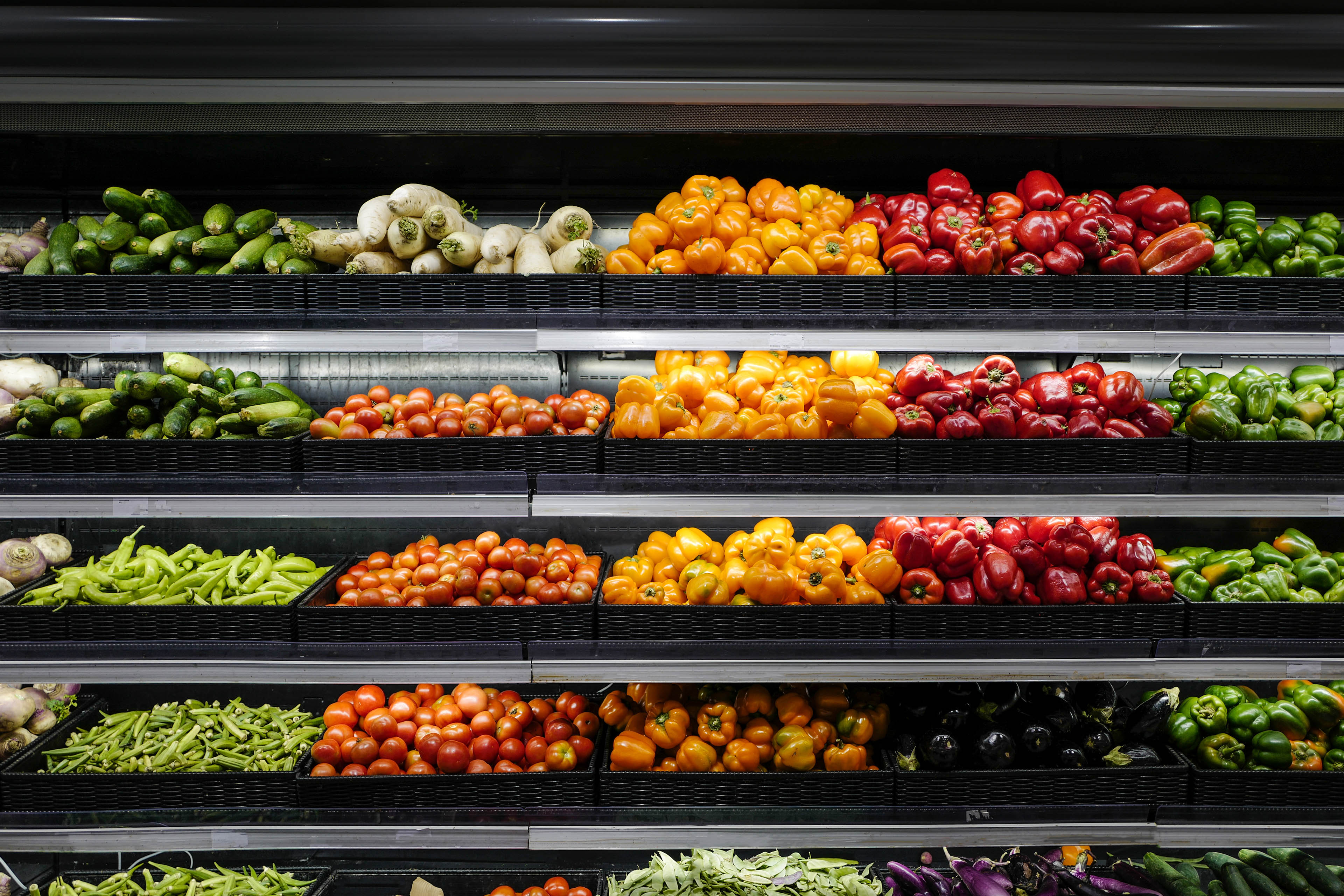EY refers to the global organization, and may refer to one or more, of the member firms of Ernst & Young Global Limited, each of which is a separate legal entity. Ernst & Young Global Limited, a UK company limited by guarantee, does not provide services to clients.

Collaboration as the next wave of innovation across the food supply chain and the importance of value networks.
In brief
- Growing trends and regulations are pressuring food companies to implement transparency strategies to address a physical-digital disconnect across the supply chain.
- New business models may be needed to create the required visibility and verification across the food system’s disparate systems, business units and supply chain partnerships.
- Value networks are collaborative business models that create transparency and value capture within their defined ecosystems.
Emerging complexities across the food system
C-suite leaders face a common challenge of trying to predict what new business models will take hold out of the convergence of developing trends, evolving technologies and shifting market structures. Specific to the food system, this complexity involves how to best approach changing regulatory requirements, new consumer expectations and the need to enhance supply chain resilience. Value networks are positioned to meet these transparency challenges as an integrated business model across source-to-consume participants.
The physical-digital disconnect in the food value chain
Transparency issues threatening the food value chain reside largely in a physical-digital disconnect associated with its products and services, restricting insights as goods are exchanged across stakeholders. Much of the disconnect is a result of the food system’s inherent production success within the physical domain. After the first two industrial revolutions birthed mechanization and standardized manufacturing, the global food value chain became highly efficient at sourcing, processing and delivering affordable products at scale.
As the food industry continued to invest in large production systems, it was typically more cost-effective to add internal labor than to digitize. This was, in part, due to technological immaturity. The realm of vision-based artificial intelligence (AI) and robotics could not yet handle many of the required processing tasks at high speed, especially with complex biological products such as meats.
The tendency to add headcount rather than digitize extended beyond processing to areas such as planning, demand forecasting and procurement. Consequently, much of the industry still functions on internal spreadsheets scattered across hundreds of employees. As companies expanded their footprint globally, digital transformation efforts with enterprise resource planning (ERP), supply chain management (SCM) and other applications occurred in isolated pockets, resulting in a disparity of systems and master data both within and across business units.
Apart from complications with internal systems, external sourcing issues present problematic transparency challenges within the food supply chain. Depending on the ingredient, product or by-product, the procurement network for major brands may range from thousands to hundreds of thousands of independent producers spanning the globe. Many of these smallholder farmers are in rural settings and remain highly analog. However, even if producers are recording data, the (oftentimes multiple) aggregation points are not equipped to associate data with blended batches of product.
Challenges hindering food supply chain transparency:
- Investment in additional labor over digitization
- Technological immaturity for required tasks
- Disparate systems within and across business units
- Sourcing from rural and highly analog producers
- Mass aggregation of product from various sources
Costly inefficiencies, changing expectations and increasing risk
Digital hindrances across the supply chain may not only result in costly inefficiencies but can also contribute to friction between the food industry and evolving societal standards. As the waves of digitization that marked the third industrial revolution led to a world of hyper-connectivity, the arrival of social media ushered in new expectations toward transparency and information accessibility. This has impacted the food industry with modern consumer trends and regulatory requirements in monitoring and reporting issues with food safety, quality and sustainability. Failures in these areas can result in costly product recalls and substantial brand damage with multiplied ramifications from negative social media.
Overcoming these challenges may require a new business model that will create the needed visibility and verification across an ecosystem of disparate systems, business units and supply chain partnerships. Without such a model, opacity can continue to hamper a food provider’s ability to manage complexities, thus amplifying risk and reducing value capture in four primary areas: brand protection, supply chain inefficiencies, consumer loyalty and regulatory compliance.
The rise of value networks in the food industry
Reducing complexity caused by a lack of transparency involves the establishment of value networks. Within the context of the aforementioned challenges, a value network is a collaborative relationship across multiple participants that embraces digital conduits to capture specific value-based incentives. These networks are designed to utilize multi-party data for alleviating risk and creating new areas of value without disclosing information that may be harmful to participants or encourage predatory behavior.
Value networks consist of the three primary components: stakeholder involvement, ecosystem governance and augmented intelligence.
Stakeholder involvement determines the participants across a network as defined by a particular business case and the required data points. Within an established value network, exclusive networks may at times be established when specific value captures do not require the broader ecosystem, such as with financial authorizations and invoicing. With the rapid adoption of The Internet of Thing (IoT), specific devices may be classified as participating actors of the network, along with predefined slices of data that are generated within their digital infrastructures. Proper stakeholder identification and inclusion of associated actors may be essential for a successful value network.
Ecosystem governance plays a vital role in defining the guidelines and audits for encouraging proper behavior among participants of a network. Such guidelines may include stipulations restricting the combination of contributed data with other sources of data for purposes outside of the intended use. Oftentimes, regional laws may impact governance, affecting what data is used and how information is accessed. To enforce adherence to governing rules, many of the transactions involving contributed data and the associated business logic for value extraction may reside within an audited layer that exists outside of any one stakeholder.
Augmented intelligence, often referred to as intelligent augmentation (IA), is the component where the most value capture occurs. As specific business cases are determined and agreed upon by members of the network, algorithms and models are applied for amplified knowledge and alert generation. The IA component enhances its human counterparts to work better, smarter and faster within a multi-stakeholder connected environment. Over time, these IA applications will begin to integrate robotic process automation and mature into true AI. For example, whereas today the focus is on rapid traceability of food recalls starting at the retailer, the intelligence generated within a value network aims to identify threats and create recalls before food items ever reach grocers.
Designing value networks for food value chain
Implementing value networks for food value chain products and services is far from a one-size-fits-all approach. The distinctness of each source-to-consume ecosystem, from aquaculture to coffee to beef, brings a set of unique challenges and requirements. Bridging the physical-digital divide in each ecosystem requires a different amalgamation of technologies across stakeholders spanning ERPs, SCMs, IoT, blockchain, logistics, RFID, barcodes and more. Overcoming the difficulty of this challenge relies, in part, on keeping an ecosystem’s focus on distinct, achievable wins. This means each stakeholder contributes only the specific slices of information that are needed to achieve well-defined, explicit insights that create mutual value.
Although the design of value networks will differ across ecosystems, stakeholders will realize common benefits as they:
- Identify value across the supply chain with expanded views of data
- Enhance resilience through improved coordination across participants
- Improve efficiency by removing waste and friction between systems
- Create stability with B2B partners and loyalty among consumers
The ROI value networks bring increases with the number of ingredients, additives, providers and touchpoints along the supply chain. Categorically, cost savings and value will be captured in many areas, ranging from food safety recalls, counterfeit protection, monitoring regional restrictions and associating continuously changing taxation duties and treaty entitlements to specific ingredients.
As many organizations within the food system undergo internal digital transformation efforts, the idea of running an external network transformation may seem like too much to implement in tandem. However, a focus on developing value networks often exposes hidden gaps within internal transformation efforts. As safety regulations rapidly increase and consumer expectations challenge the status quo, parties that pursue value networks will uncover many areas of risk reduction and revenue generation that may justify the pursuit and deliver competitive advantage.
Value networks as a strategic driver in the food industry
As the food industry progresses through various forms of digital transformation, the ecosystem-based business model derived from value networks can be advanced as a new strategy driver. The past decade has seen a flurry of digital transformation efforts that has been primarily internally focused. Represented as Digital Transformation (DT 1.0) on the lower S curve, these internal transformations are approaching the top of the current trend as various pressures (food safety, quality assurance, sustainability and consumer expectations) ready the industry for the formation of the emerging, ecosystem-based trend.
As the next wave of Digital Transformation (DT 2.0) continues to build momentum, food companies will likely transition to the new S-curve, where digital efforts will be collaborative and multi-party. As this trend continues to emerge, many areas of value capture are being identified with risk reduction and revenue generation to validate the business model. As the value networks model matures to its crest and Digital Transformation 3.0 arises, the competitive structures of today’s food system may have morphed into something quite different.
Article contributor: Brandon Buie, Director, Ernst & Young LLP, Global Food & Agribusiness, EY-Parthenon.
Summary
Changing consumer preferences, new regulatory requirements and supply chain pressures have brought the food industry to a tipping point. The food system, with its impressive efficiency and scale, may now look beyond vertical silos and become transparency-focused by digitizing across stakeholders and removing analog gaps. Adapting to these dynamic environments where technology enables new forms of collaboration, where production and consumer demand are tightly bound, and where sustainability shapes investment decisions is a key focus of Ernst & Young LLP’s Food System Reimagined.
Related articles
How a frozen-foods powerhouse kept their cool on the way to being #1
A supply chain transformation helped a frozen-foods company keep up with demand throughout the pandemic and set the table for future growth. Learn more.
How COVID-19 impacted supply chains and what comes next
Research shows severe disruption through the pandemic is driving enterprises to make their supply chains more resilient, collaborative and networked.
How EY can help
-
Supply Chain Reinvention helps clients effect a fundamental change in their performance to support sales growth, become more cost-competitive, minimize risk and improve operational resilience.
Read more -
Discover how EY's digital transformation teams can help your business evolve quickly to seize opportunities and mitigate risks. Find out more.
Read more -
Our Strategy Consulting teams help CEOs achieve maximum value for stakeholders by designing strategies that improve profitability and long-term value.
Read more




